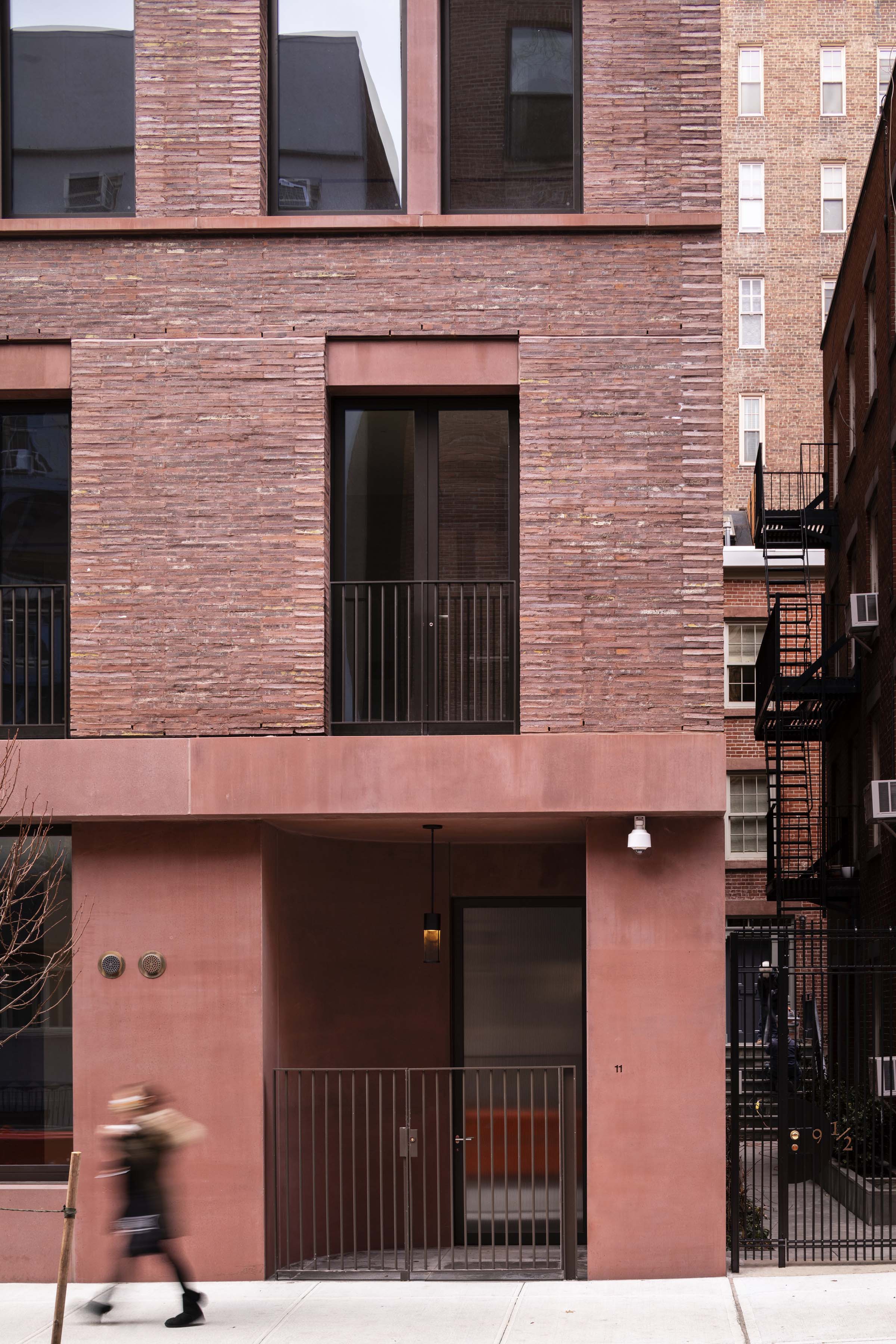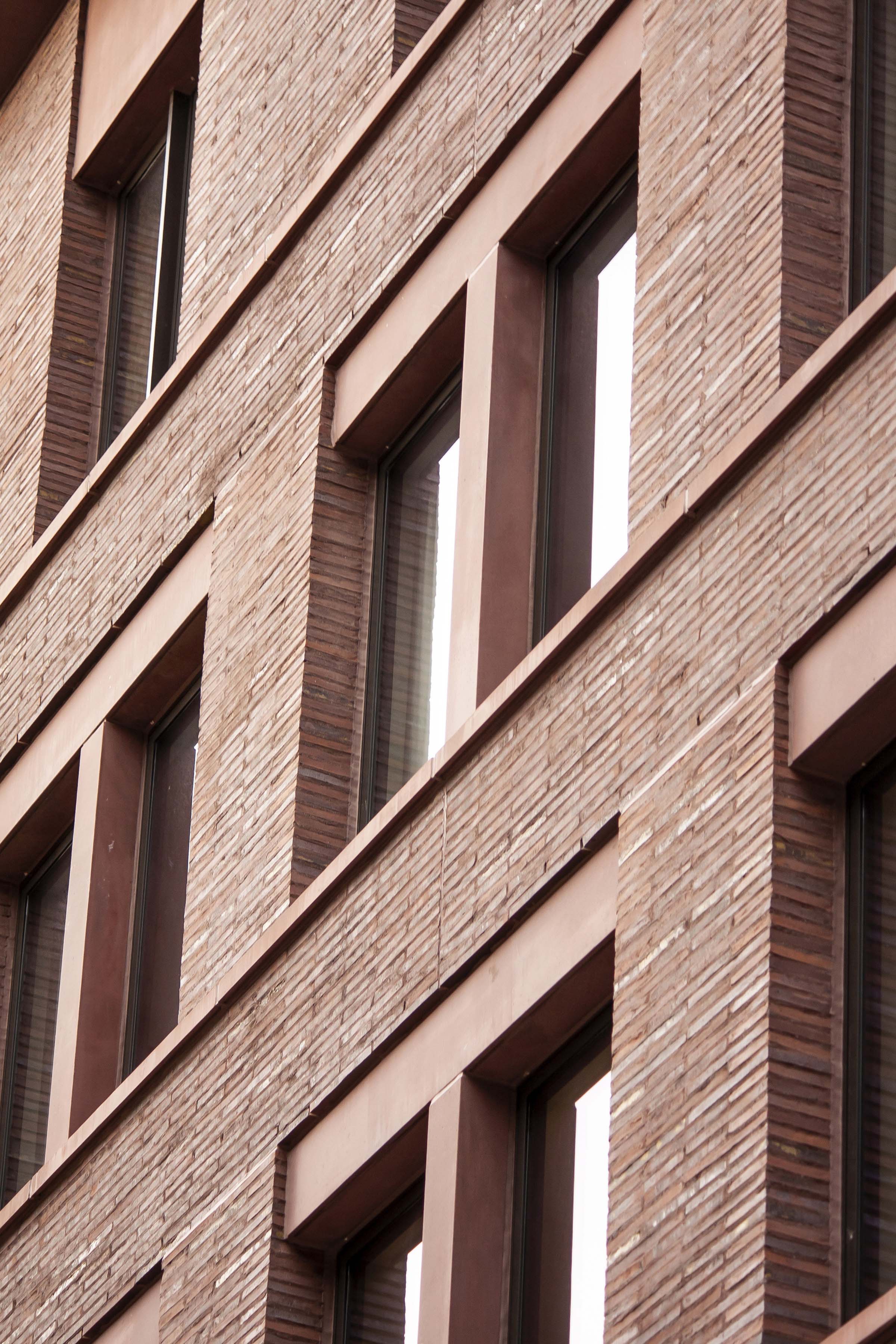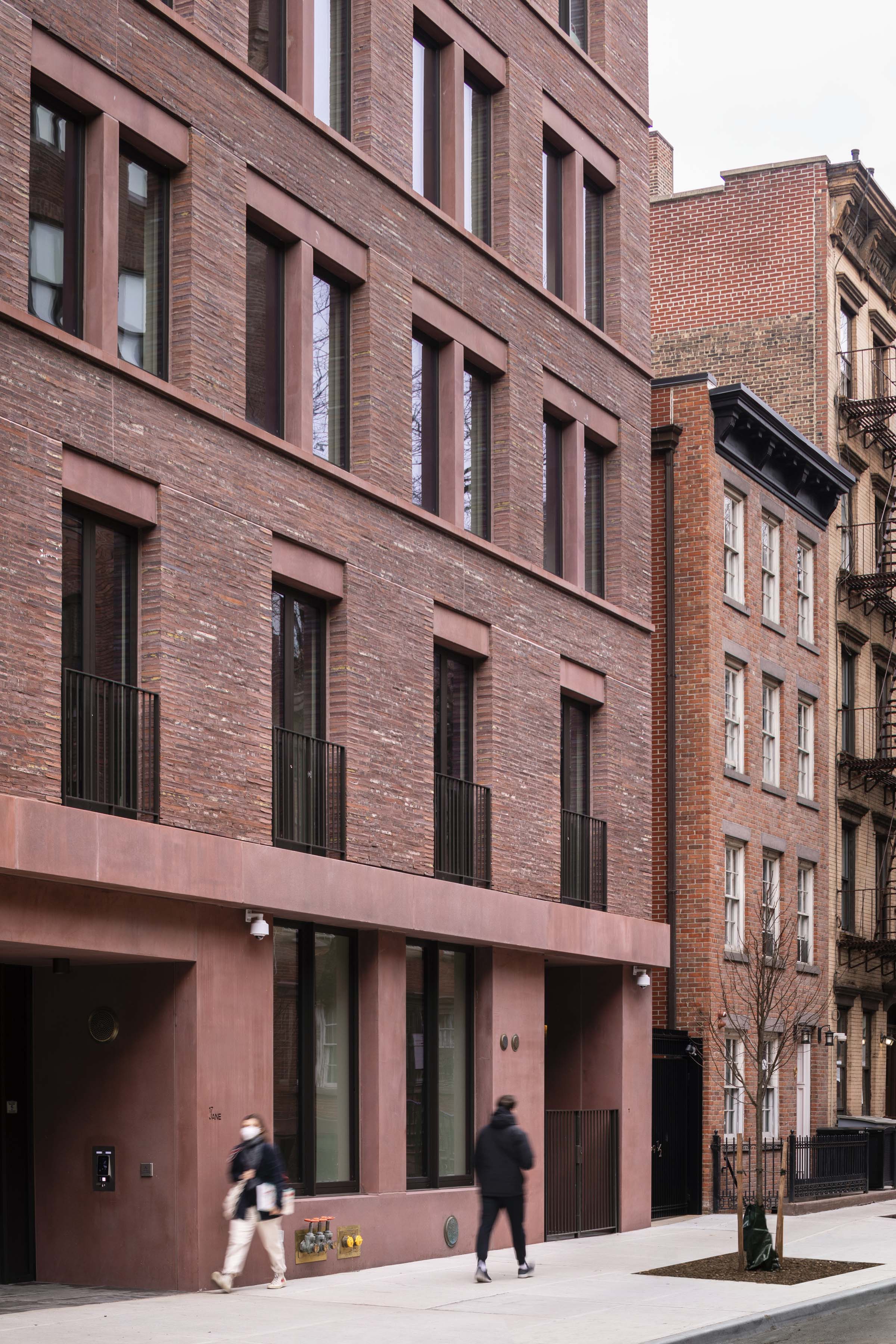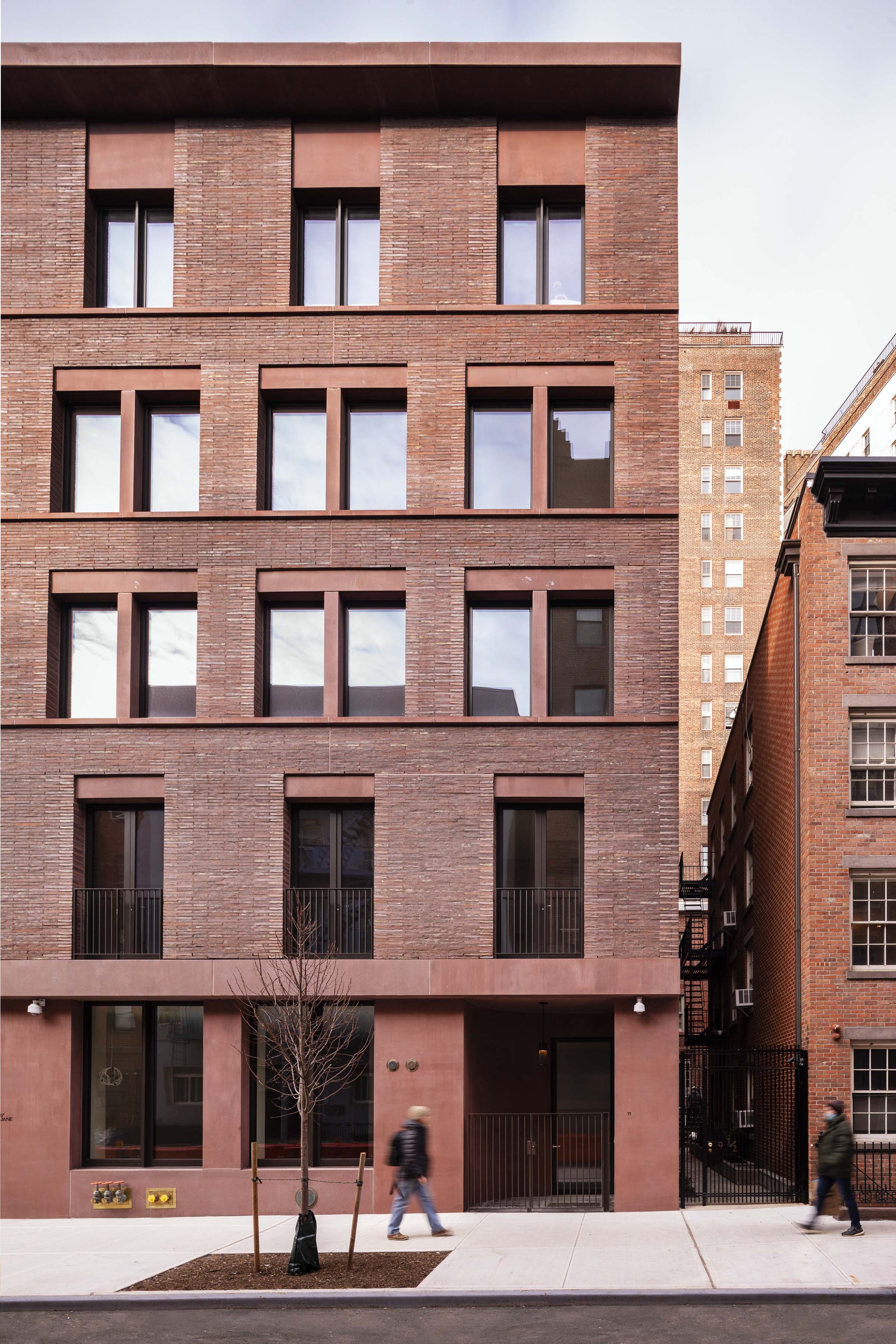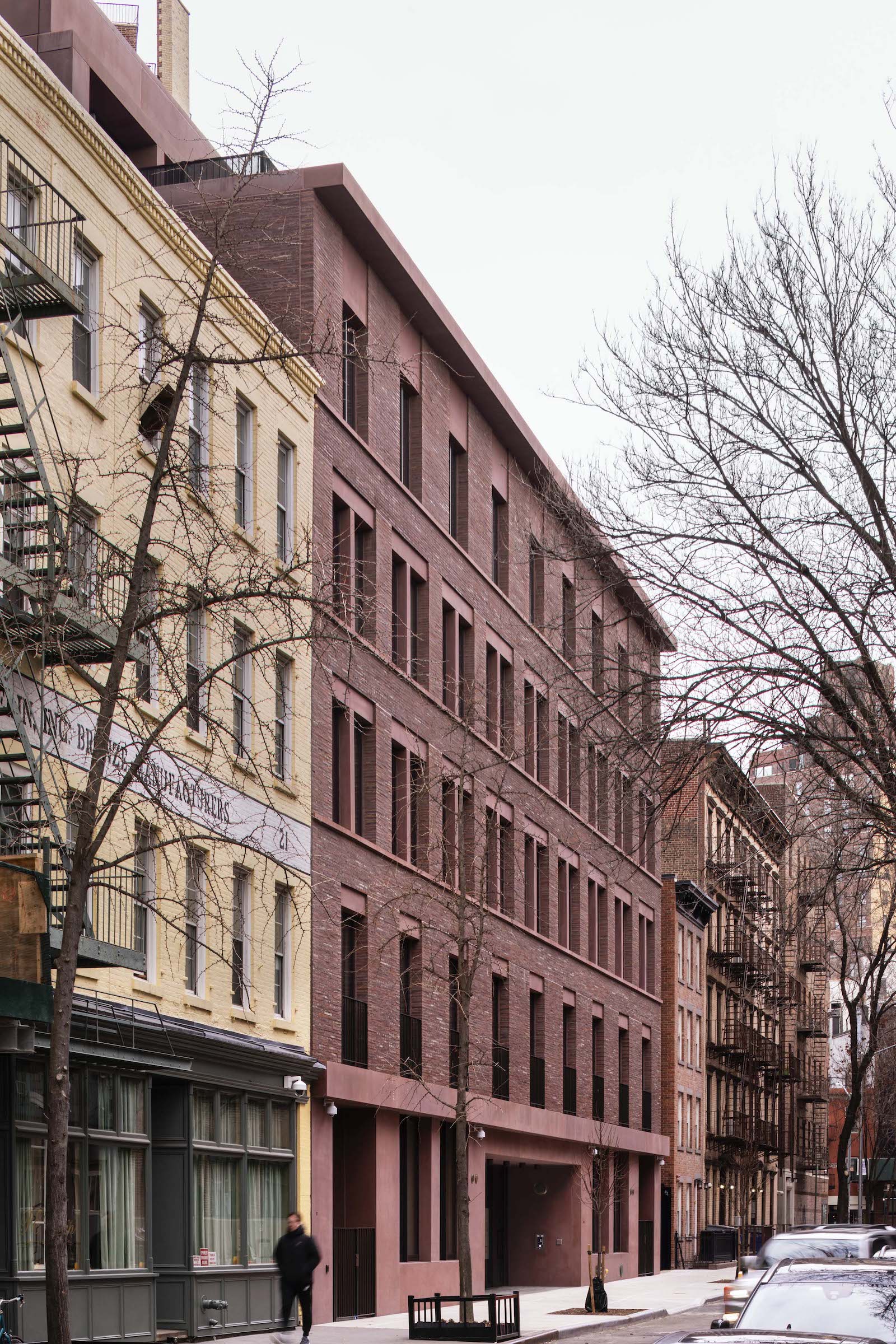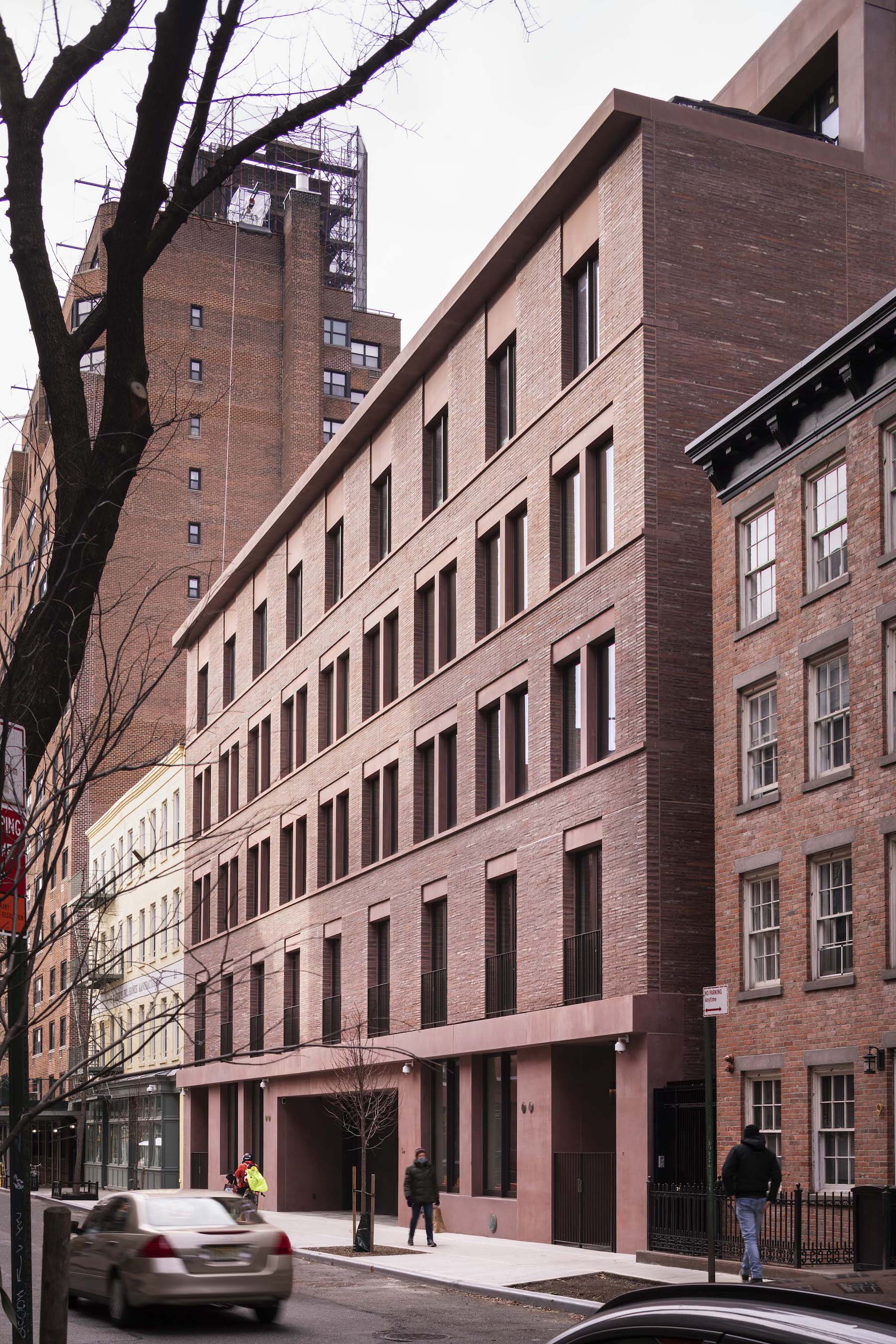On Jane Street between Manhattan’s West 4th Street and Greenwich Avenue, a handsome, textured Venetian-red brick building sits unassumingly. On its left, it abuts a brick building painted pale-yellow, home to an architectural hardware firm and metal foundry. On its right, it’s separated from a faded red brick Greek Revival townhouse by means of a narrow alley and a secured black gate. David Chipperfield Architects’ 11-19 Jane Street was designed as a contemporary reinterpretation of a historical typology. The six-story, seven-unit apartment building, comprised of a below-ground parking garage, two duplex townhouses, lateral apartments, and a penthouse with a rooftop garden, sits on a largely residential street lined with red brick townhouses and apartment blocks, on a site previously occupied by a two-story parking garage.
- Architects
David Chipperfield Architects - Facade Manufacturer
Petersen Tegl - Structural Engineer
Ysrael A. Seinuk P.C. - Construction Manager
Sciame Construction - Facade Consultant
Wiss, Janney, Elstner Associates - Location
New York, New York - Date of
Completion
December 2019 - System
Brick and cement - Products
Bricks by Petersen Tegl
Concrete panels by BPDL Béton préfabriqué
The building’s design, symmetrical in composition, manages to both reflect and depart from the historical context of the West Village; closer inspection reveals that the deep red facade of the building is composed of both traditional bricks and modern concrete, meticulously color-matched. The slender Roman bricks, each mottled and varied slightly in color, were set by hand on-site, their size determined by the specifications of the expansion joints. Pigmented concrete with faint, vertical striations is employed on the ground floor, providing structural support, as well as in the string courses, mullions, lintels, and projecting cornices in the form of precast panels. The building’s second story features balconied French windows.
Across floors, the varying rhythms of the doors and windows recall a superposed order, common in Roman and Renaissance architecture, in which successive stories of buildings have different orders, progressing from heaviest at the bottom to lightest at top. The use of concrete on the ground floor conveys a sense of solidity and strength and gives “a strong sculptural presence,” according to the design team, while the thin mullions of the fifth story appear more delicate. From across the street, the concrete on either side of the recessed townhouse entrances appears as load-bearing columns. The penthouse on the upper level departs from the logic of the superposed order; it features large, wide windows and higher ceilings and is constructed of concrete that continues from the cornice, but it is setback from the street and obscured from passersby along the sidewalk.
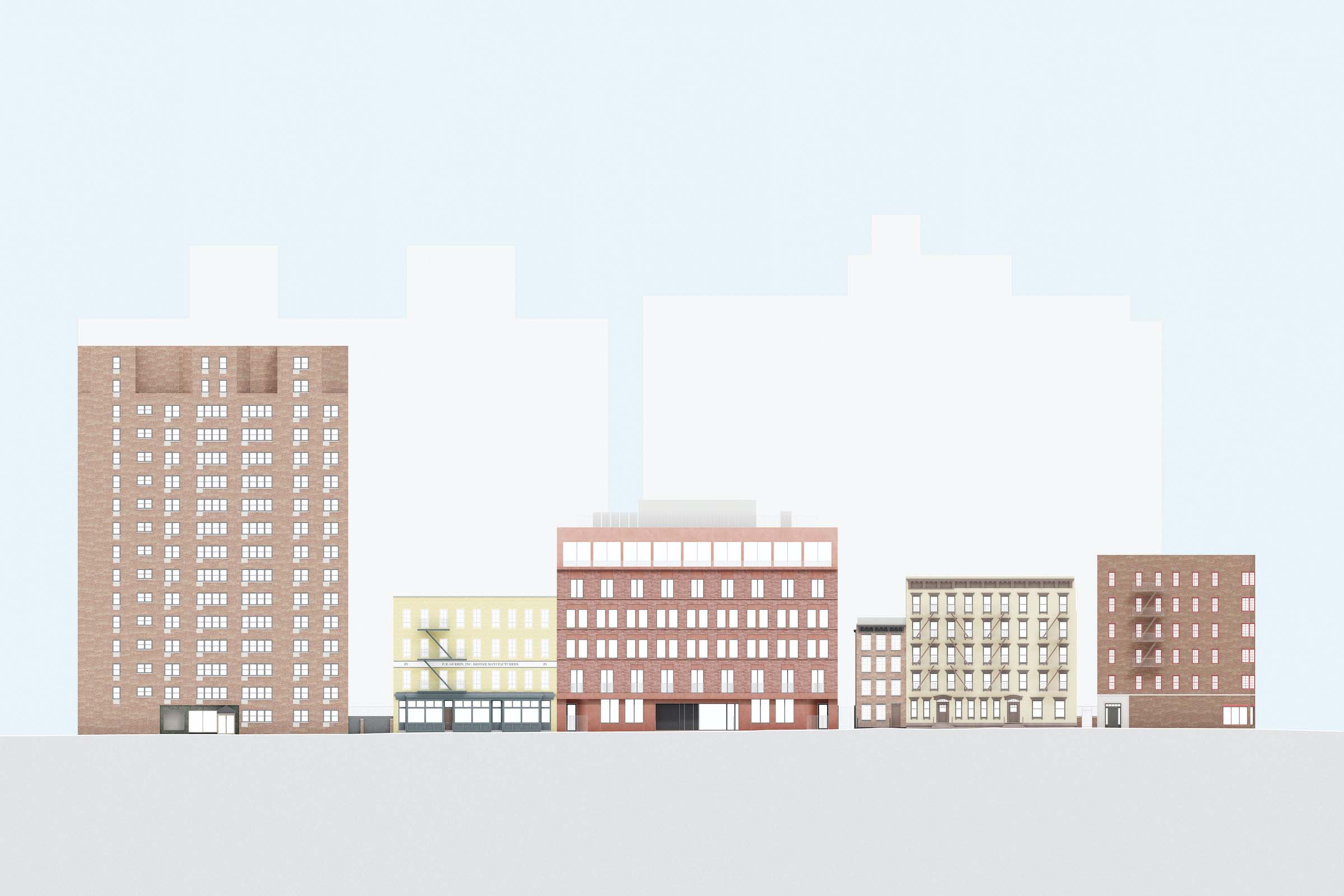
When initially proposed, 11-19 Jane Street was met with strong opposition from locals, who felt the building was ill-suited for its context. The proposal required several rounds of design changes before it was ultimately approved by the Landmarks Preservation Commission. Though it alters Jane Street and introduces a condominium in a neighborhood where there are few, the building appears ultimately as a thoughtful and restrained response to the sensitive historical context of the neighborhood. Construction was completed earlier this month.
